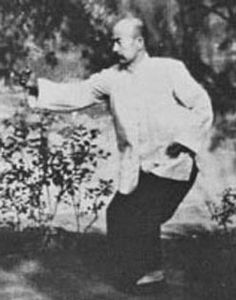
Orthodox Chinese Boxing from R.W. Smith
Sophisticated physical culture, Effective self-defense, Moving meditation

Sophisticated physical culture, Effective self-defense, Moving meditation
“Chinese boxing” is simply another way to refer to “kung fu” or Chinese martial arts (”CMA”). You might also come across the terms “wushu”, which means, “martial arts” or “kuoshu”, which means, “national arts”.
Chinese Boxing = Kung Fu = Chinese Martial Arts = Wushu = Kuoshu
In decades past in the West, “kung fu” and “kuo shu” were used to refer to more traditional styles of boxing usually found in the Chinese cultural diaspora of Hong Kong, Taiwan, and Singapore, while “wu shu” was used to refer to the more sportive, dance-like routines created, revised, and endorsed by the communist government in mainland China. Chinese kickboxing is called "sanda" or sometimes "san-shou," and includes throwing techniques. It is also called “lei tai” after the platform upon which full-contact matches are traditionally conducted. There's also Chinese jacketed wrestling, which is called "shuai-chiao," which resembles judo.
Generally, Chinese boxing is categorized as Northern or Southern. Usually, a particular style is designated by a name that includes either an animal, a family surname, a village, or some other characteristic of the style. As with karate, within certain styles there may be many sub-styles or variations. There are three particular styles which are generally designated as "nei-chia / neijia," or “internal” styles originating from the "Taoist" world-view:
All other styles are contrasted with the neijia as being “external” styles, or "weijia." Sometimes, the term “Shaolin,” referring to the Buddhist monastery where many external styles purportedly originated, will be used broadly for all weijia styles, in contrast to the “Taoist” neijia. Sometimes other styles will also claim to be primarily internal, like liu he ba fa, or tong bei chuan; or, some external styles will claim to have internal components at higher levels of practice. The internal arts differ in practice and emphasis from the external styles. External forms of kung fu are practiced and executed much like karate and taekwondo, emphasizing strength, speed, and power. Neijia emphasize relaxation, responsiveness, and “rooting” one’s posture into the ground. Nowadays, the neijia arts are practiced less as martial arts styles and more as physical culture disciplines, much like yoga, for self-cultivation, relaxation, and wellness.
Please see my blog for more information about nei-chia ch'uan.

Mr. Harry Johnston & Mr. R.W. Smith
Prof. Cheng Man Ching's 37 postures
Forms and hands-on exercises (chin-na & tui-shou)
Outdoors -- time to be determined
Adults only -- (discounts available for college students and first responders)
Forms & hands-on exercises
CMC 37 postures
Be the first to hear about upcoming class registration, special events, and free trials.
If you have questions about the opportunities available to you in my classes, send me a message. I will get back to you as soon as possible.
(Adjacent photo from Journal of Asian Martial Arts)

We use cookies to analyze website traffic and optimize your website experience. By accepting our use of cookies, your data will be aggregated with all other user data.